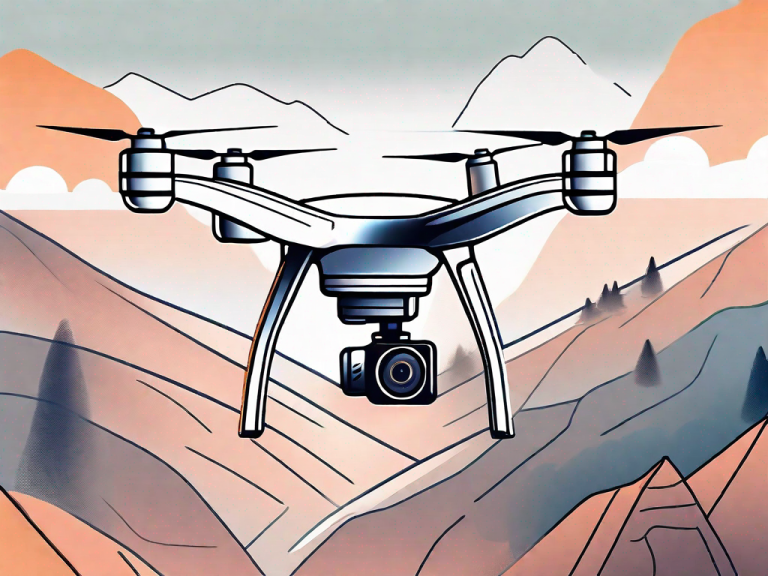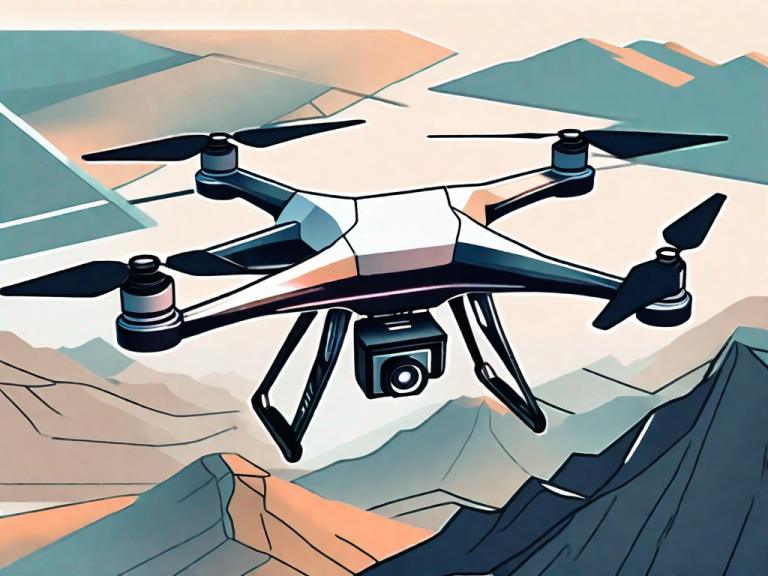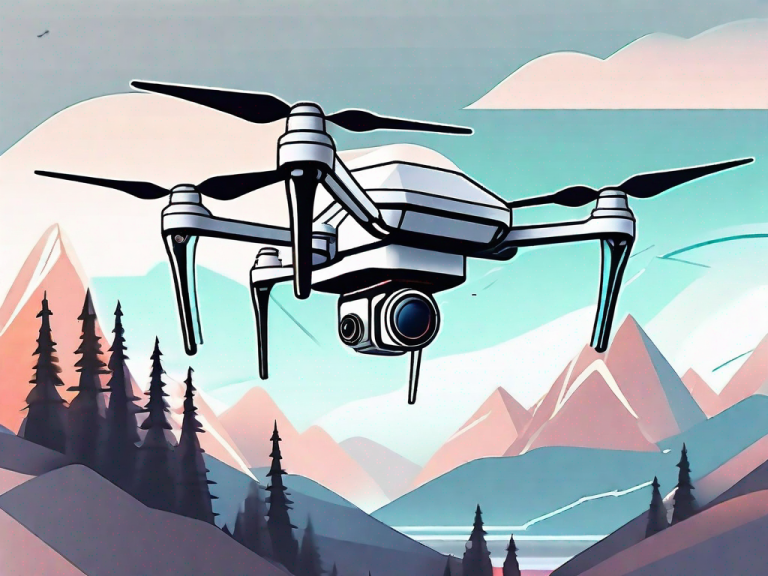Understanding the concept of contrast in aerial compositions
When it comes to aerial photography, contrast plays a crucial role in defining the visual impact of an image. Contrast refers to the difference between dark and light areas within a composition, and it can be manipulated to create varying effects and evoke specific emotions. In aerial compositions, contrast can be achieved through the use of high contrast techniques or low contrast techniques. Each approach has its own unique characteristics and can significantly influence the overall aesthetics and storytelling potential of a photograph.
High contrast techniques involve capturing scenes with a significant difference between the darkest and lightest areas. This creates a bold and dramatic effect, with strong visual impact. High contrast images often have deep shadows and bright highlights, resulting in a dynamic and eye-catching composition. This technique is commonly used to emphasize texture, shape, and form in aerial photography, adding depth and dimension to the image.
On the other hand, low contrast techniques aim to create a more subtle and nuanced effect. By reducing the difference between dark and light areas, low contrast images have a softer and more muted appearance. This approach can evoke a sense of tranquility and serenity, as well as convey a dream-like or ethereal atmosphere. Low contrast aerial compositions are often used to capture the beauty of landscapes, showcasing the gentle transitions between different elements and creating a sense of harmony.
Exploring the impact of high contrast techniques in aerial photography
High contrast techniques involve the deliberate exaggeration of the difference between light and dark areas in an image. By increasing the contrast, the photographer can create a strong visual impact that draws the viewer’s attention to specific elements within the composition. High contrast photography often produces bold, dramatic images with deep shadows and bright highlights. This technique is particularly effective in capturing subjects with strong lines, textures, and distinct shapes, as it enhances the sense of depth and dimension.
In aerial photography, high contrast techniques can be used to emphasize the ruggedness of a mountain range, the intricate patterns of an urban landscape, or the interplay between light and shadow on a coastline. By accentuating the differences between the brightest highlights and darkest shadows, high contrast compositions can convey a sense of energy, intensity, and even mystery.
One of the advantages of using high contrast techniques in aerial photography is that it can help to create a sense of scale and perspective. By emphasizing the differences between light and dark areas, the photographer can highlight the vastness of a landscape or the height of a structure. This can be particularly effective when capturing aerial shots of cities, where the contrast between the towering buildings and the surrounding environment can be accentuated.
Another benefit of high contrast techniques in aerial photography is the ability to capture unique and abstract compositions. By exaggerating the contrast, the photographer can create striking patterns and shapes that may not be immediately recognizable from a traditional viewpoint. This can result in visually captivating images that challenge the viewer’s perception and invite them to explore the photograph further.
The benefits of using low contrast techniques in aerial compositions
On the other hand, low contrast techniques involve reducing the difference between light and dark areas within an image. This approach often results in photographs with softer tones, subtle transitions between shades, and a more harmonious look. Low contrast photography is ideal for capturing serene landscapes, delicate details, and subjects that rely on tonal variations rather than strong contrasts for visual impact.
In aerial compositions, low contrast techniques can be employed to create ethereal images of fog-covered forests, dreamy seascapes at sunrise, or gentle rolling hills bathed in soft light. By toning down the differences between highlights and shadows, low contrast compositions can evoke a sense of tranquility, serenity, and even nostalgia. This technique works exceptionally well when the goal is to convey a peaceful mood or present a subject in a more contemplative and understated manner.
How contrast affects the mood and atmosphere of aerial images
Contrast plays a vital role in establishing the mood and atmosphere of an aerial photograph. The choice between high and low contrast techniques can drastically alter the emotions conveyed by the image. High contrast photographs tend to evoke a sense of dynamism, excitement, and tension, while low contrast images often create a soothing, calm, and introspective ambiance.
For example, in aerial photography, high contrast can be used to capture the drama of storm clouds gathering over a city, while low contrast can help convey the peaceful serenity of a remote island at sunset. By intentionally selecting the appropriate level of contrast, the photographer can effectively elicit an emotional response from the viewer and shape the overall narrative of the image.
Analyzing the role of contrast in enhancing depth and dimension in aerial compositions
Contrast is closely linked to the perception of depth and dimension within a photograph. By manipulating the contrast, photographers can create a sense of three-dimensionality and visually separate different elements within the composition. High contrast techniques emphasize the differences between foreground and background, enhancing the illusion of depth and making objects appear more substantial and impactful.
On the other hand, low contrast techniques can provide a more subtle separation between elements, creating a smoother transition between different planes and adding a layer of depth. This can be particularly effective when photographing vast landscapes from above, as it allows the viewer’s eyes to explore the image and experience a sense of immersion.
Tips for creating visually stunning aerial compositions with high contrast techniques
When using high contrast techniques in aerial photography, there are a few key considerations to keep in mind. Firstly, it’s important to pay attention to the direction and quality of light. Experiment with shooting during the golden hours or under dramatic skies to enhance the contrast naturally. Additionally, using a longer lens can help compress the elements in the frame and boost the perceived contrast.
Composing the image with a clear subject and ensuring a strong interplay between light and shadow will further accentuate the contrast. Finally, in post-processing, fine-tune the levels and curves, paying careful attention to preserve the details in both highlights and shadows.
Mastering the art of subtlety: utilizing low contrast techniques for captivating aerial photographs
When opting for low contrast techniques in aerial compositions, it’s important to prioritize subtle tonal variations and a gentle transition between light and dark areas. Soft and diffused light conditions, such as overcast skies or misty mornings, can lend themselves well to low contrast photography.
Focus on capturing delicate details and textures, emphasizing the interplay between different shades rather than stark differences. To create a cohesive and harmonious composition, be aware of the overall color palette and use it to connect different elements within the frame. In post-processing, consider employing techniques like dodge and burn to refine the tonal range and enhance the visual depth.
Contrast as a storytelling tool: conveying emotions through aerial compositions
The use of contrast in aerial compositions goes beyond its visual impact. It can also be a powerful storytelling tool, allowing photographers to convey specific emotions and narratives. High contrast images often evoke a sense of excitement, tension, and even drama. By leveraging the dramatic light and shadows, photographers can capture a moment of intensity and create a sense of anticipation.
On the other hand, low contrast compositions lend themselves to more introspective and tranquil narratives. The gentle and harmonious transitions between tones can evoke a sense of serenity, nostalgia, or even mystery. By carefully considering the contrast and its role in the visual storytelling process, photographers can enhance the impact of their aerial compositions and create a stronger connection with the viewers.
The science behind contrast: understanding how it influences visual perception in aerial photography
Contrast in aerial photography is not just a matter of aesthetics; it also has a scientific basis in visual perception. The human eye is naturally drawn to areas of high contrast, as they stand out from the surrounding elements. This natural inclination can be leveraged to direct the viewer’s attention to specific points of interest within the composition.
Understanding the principles of visual perception can help photographers make intentional choices when it comes to contrast. By strategically placing areas of high contrast within the frame, photographers can guide the viewer’s gaze and create a visual hierarchy. This can be particularly effective in aerial compositions, where a multitude of elements can compete for attention.
Harnessing the power of contrast to create dynamic and impactful aerial photographs
Contrast, whether high or low, is a key ingredient in creating dynamic and impactful aerial photographs. By deliberately manipulating the difference between light and dark areas within an image, photographers can control the visual impact, mood, depth, and storytelling potential of their compositions.
Whether aiming for bold, dramatic high contrast images or gentle, ethereal low contrast compositions, understanding the principles and techniques associated with contrast in aerial photography is essential. By experimenting with different approaches and honing their skills, photographers can fully leverage the power of contrast to create visually stunning and emotionally captivating aerial photographs.
Balancing light and shadows: achieving optimal contrast in aerial compositions
Achieving optimal contrast in aerial compositions requires striking a balance between light and shadows. A good understanding of the direction and quality of light is essential to effectively control the level of contrast within an image.
When shooting aerial photographs, paying attention to the angle and intensity of sunlight can make a significant difference. Shooting during the “golden hours” (early morning or late afternoon) when the sun is low on the horizon can provide a soft, warm light that naturally enhances the contrast, adding depth and dimension to the image.
Furthermore, incorporating various elements such as buildings, mountains, or bodies of water can help create shadow and light interplay, further enhancing the contrast. By evaluating the scene and adjusting the camera settings accordingly, photographers can achieve a balanced distribution of light and shadows for optimal contrast in their aerial compositions.
Considerations when choosing between high and low contrast techniques in aerial photography
When deciding whether to use high or low contrast techniques in aerial photography, it is crucial to consider the subject, mood, and desired visual impact. High contrast techniques are suitable for scenes with strong lines, textures, and vibrant colors. Subjects such as urban cityscapes, jagged mountain ranges, or architectural wonders often benefit from the bold and dramatic effect created by high contrast.
On the other hand, low contrast techniques are well-suited for capturing softer and more serene landscapes, delicate details, and subjects that rely on subtle tonal variations for visual impact. Whether it’s capturing the stillness of a mist-covered forest or the gentle curves of a winding river, low contrast compositions can create a peaceful and contemplative mood.
Inspiring examples of high contrast aerial photographs that evoke a sense of drama and intensity
Looking for inspiration when exploring high contrast techniques in aerial photography? Here are some examples that showcase the visual impact and drama created by high contrast compositions.
1. Capturing the jagged peaks and deep valleys of a mountain range, with the sharp edges of the rocks contrasting against the bright sunlit snow.2. Showcasing the stark contrast between the gleaming glass skyscrapers of an urban skyline and the dark shadows cast by the surrounding buildings.3. Highlighting the intricate details and contrasting tones of an ancient cathedral against a stormy sky, creating a sense of awe and drama.4. Emphasizing the contrasting colors and textures of a vibrant autumn forest, where the golden leaves brightly stand out against the shadowed trees.5. Utilizing the interplay between light and shadow on a coastline, with crashing waves and dark cliffs juxtaposed against the bright sunlight.
Exploring the versatility of low contrast techniques for capturing serene and ethereal landscapes from above
Low contrast techniques in aerial photography offer a wide range of possibilities for capturing serene and ethereal landscapes. Here are some examples that illustrate the versatility and beauty of using low contrast in aerial compositions.
1. Photographing mist-covered valleys at sunrise, with the soft light gently illuminating the rolling hills and casting a dreamlike atmosphere.2. Capturing the graceful curves of a river meandering through a tranquil landscape, where the subtle variations in tone create a sense of harmony.3. Exploring the delicate details of a flower field, with the petals bathed in soft, diffused light, offering a serene and calming visual experience.4. Presenting a tranquil seascape at sunset, where the pastel hues of the sky blend harmoniously with the softly lit waves, creating a peaceful ambiance.5. Showcasing the ethereal beauty of a foggy forest, where the distant trees fade into a soft mist, evoking a sense of mystery and enchantment.
By experimenting with low contrast techniques, photographers can capture the sublime and otherworldly qualities of nature from above, transporting viewers to a realm of tranquility and awe.
In conclusion, the differences between using high contrast and low contrast techniques in aerial compositions are significant. High contrast techniques enhance drama and visual impact, while low contrast techniques create a more serene and ethereal aesthetic. Understanding the concept of contrast, analyzing its effects on mood, depth, and storytelling, and mastering the art of utilizing contrast as a visual tool are essential for capturing visually stunning and emotionally captivating aerial photographs. So, whether aiming for dynamic high contrast images or subtle low contrast compositions, photographers can leverage the power of contrast to create breathtaking aerial compositions that captivate and engage viewers.









